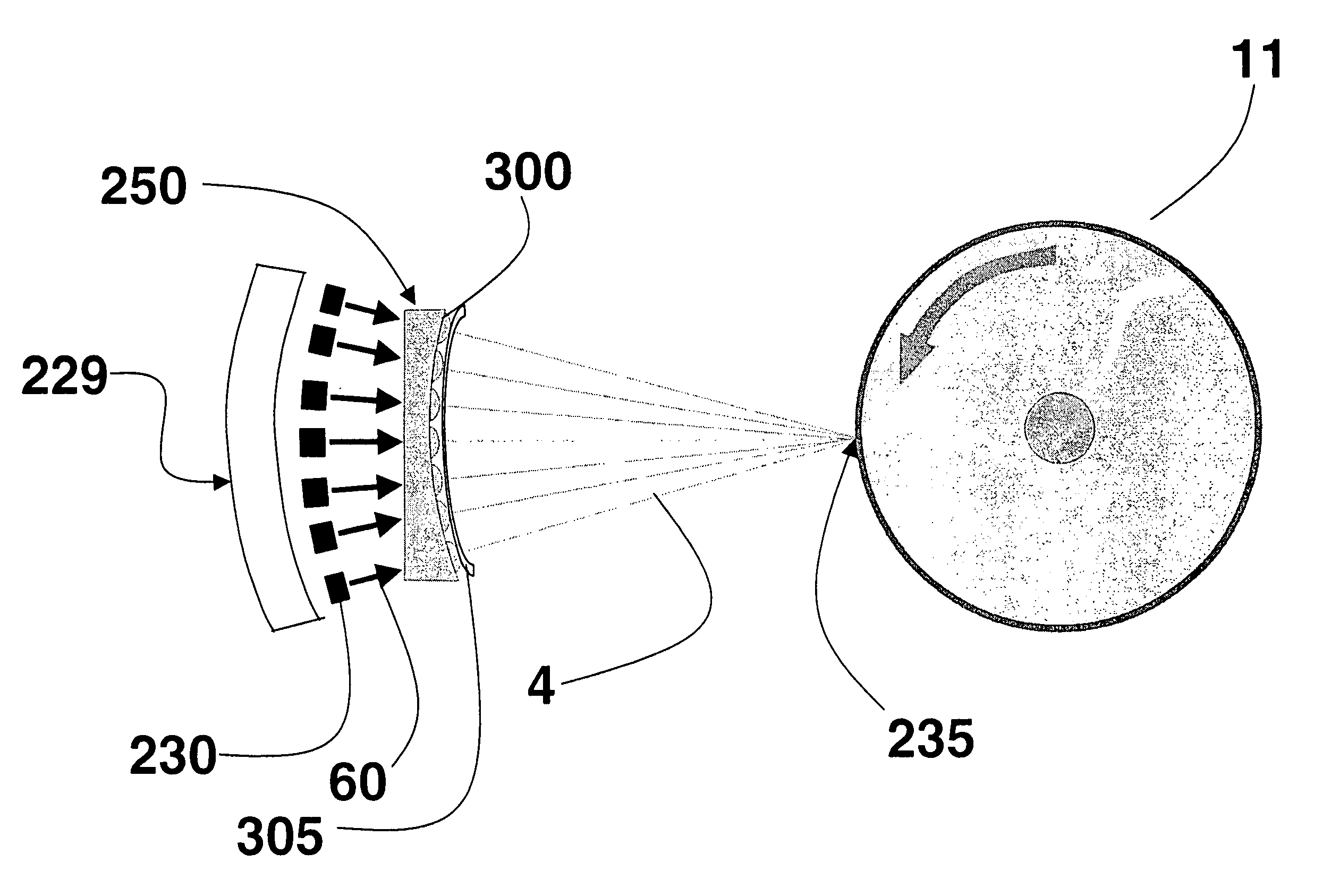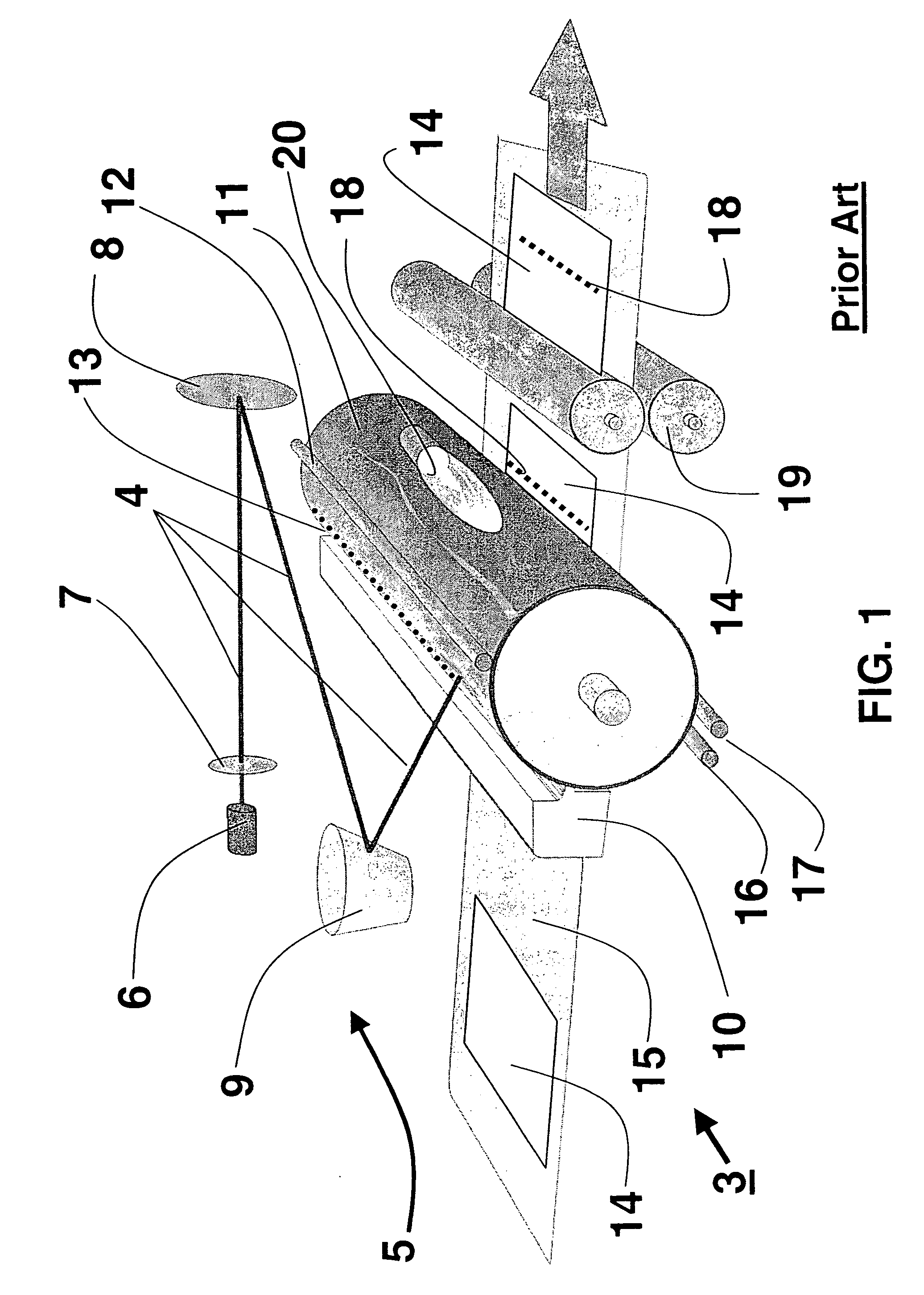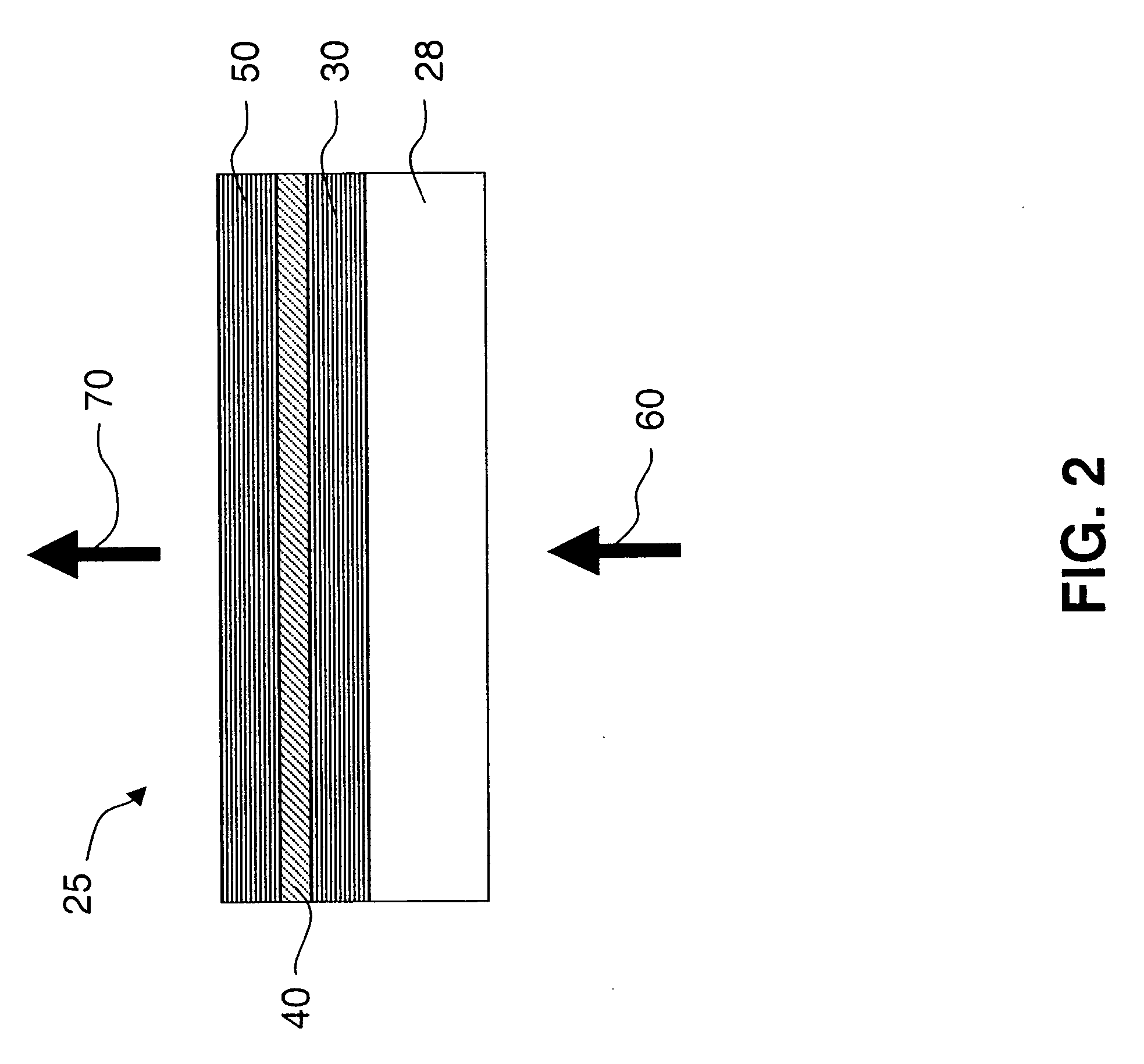Flexible organic laser printer
a laser printer and flexible technology, applied in printing and other directions, can solve the problems of limiting output resolution, affecting the efficiency of printing,
- Summary
- Abstract
- Description
- Claims
- Application Information
AI Technical Summary
Problems solved by technology
Method used
Image
Examples
Embodiment Construction
[0050] In a typical prior art electro-photographic printer using the laser printer the most expensive parts are the write laser and its associated optics. This is also generally the limiting factor in output resolution. This is also true in the case where the LED array is used as the printer because of the LED array's complicated assembly and alignment process.
[0051] Instead of using the laser and expensive reflective optics or the LED array and it's complicated assembly it is advantageous to replace these two components with an array of organic lasers. Organic based lasers can be fabricated over large areas and grown on a variety of substrates such as glass, Silica and most importantly flexible plastics. Organic lasers can be available in a broad range of wavelengths allowing optimization with photoconductive material. Print heads made from organic laser arrays will be cheaper to produce with faster output times and higher resolution.
[0052] In the present invention, the terminolo...
PUM
 Login to View More
Login to View More Abstract
Description
Claims
Application Information
 Login to View More
Login to View More - R&D
- Intellectual Property
- Life Sciences
- Materials
- Tech Scout
- Unparalleled Data Quality
- Higher Quality Content
- 60% Fewer Hallucinations
Browse by: Latest US Patents, China's latest patents, Technical Efficacy Thesaurus, Application Domain, Technology Topic, Popular Technical Reports.
© 2025 PatSnap. All rights reserved.Legal|Privacy policy|Modern Slavery Act Transparency Statement|Sitemap|About US| Contact US: help@patsnap.com



